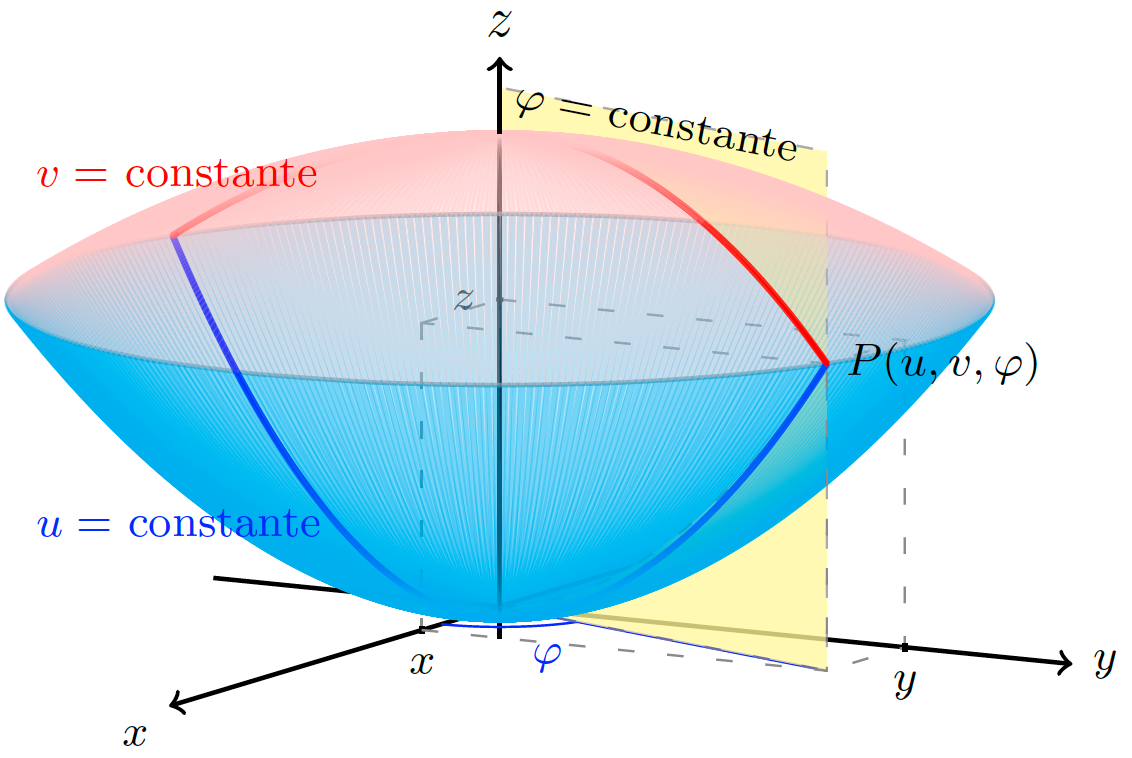Edit and compile if you like:
\documentclass{article}\usepackage{tikz}\usepackage{tikz-3dplot}\usetikzlibrary{math}%\usetikzlibrary{patterns}\usepackage[active,tightpage]{preview}\PreviewEnvironment{tikzpicture}\setlength\PreviewBorder{1pt}%% File name: Parabolic-Coordinates-3D.tex% Description:% A geometric representation of the parabolic coordinates in 3D-space is shown.%% Date of creation: March,12th, 2023.% Date of last modification: March,12th, 2023.% Author: Efraín Soto Apolinar.% https://www.aprendematematicas.org.mx/author/efrain-soto-apolinar/instructing-courses/% Source: to appear in the second edition of the book titled:% Illustrated Glossary for School Mathematics.% https://tinyurl.com/yayyxrbz%% Terms of use:% According to TikZ.net% https://creativecommons.org/licenses/by-nc-sa/4.0/% Your commitment to the terms of use is greatly appreciated.%\begin{document}%\tdplotsetmaincoords{80}{120}\begin{tikzpicture}[tdplot_main_coords]\tikzmath{function u(\x,\y) {return abs(sqrt(sqrt(\x * \x + \y * \y) - \y)) ;};}\tikzmath{function v(\x,\y) {return sqrt(sqrt(\x * \x + \y * \y) + \y) ;};}\tikzmath{function p(\x,\y) {return atan(\y / \x) ;};}%% \tikzmath{function x(\u,\v,\p) {return \u * \v * cos(\p r);};}% \tikzmath{function y(\u,\v,\p) {return \u * \v * sin(\p r);};}% \tikzmath{function z(\u,\v,\p) {return 0.5 * (\u * \u - \v * \v);};}%\pgfmathsetmacro{\px}{1.0}\pgfmathsetmacro{\py}{3.0}\pgfmathsetmacro{\pz}{2.0}
Click to download: parabolic-coordinates-3d.tex • parabolic-coordinates-3d.pdf
Open in Overleaf: parabolic-coordinates-3d.tex
See more on the author page of Efraín Soto Apolinar.


